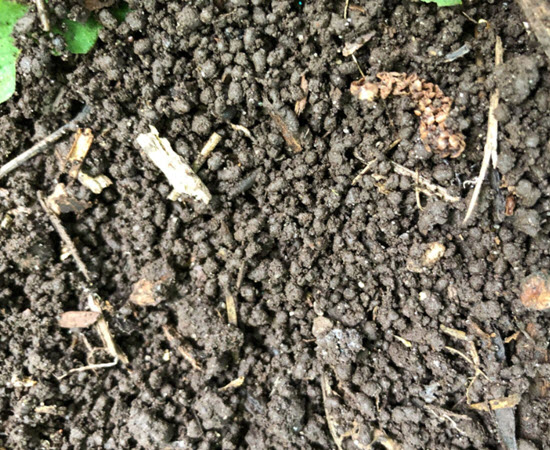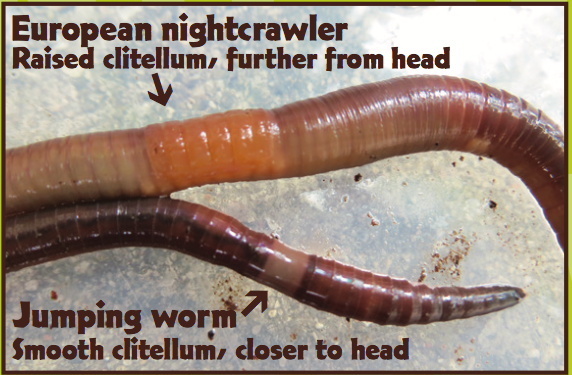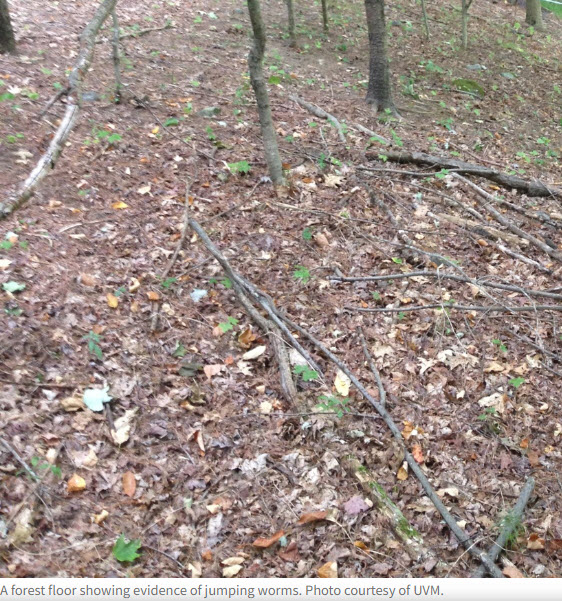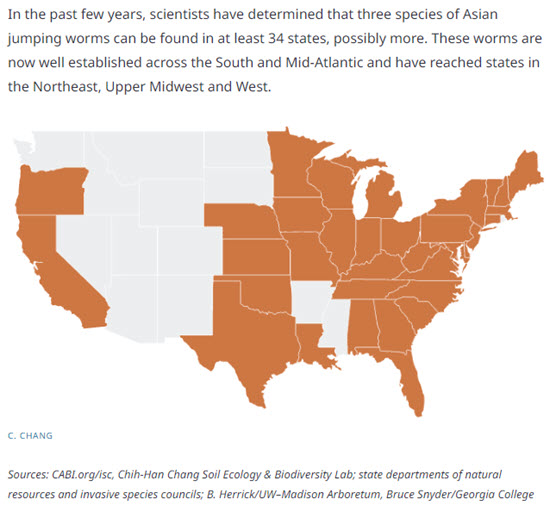Click below to listen to my 2 min. Garden Bite radio show/podcast: Jumping worm update 2022
Audio PlayerI first talked about jumping worms in 2020 after the Minnesota Dept. of Natural Resources sent out an urgent message. It’s 2022 and they continue to jump their way into our gardens, destroying the soil. A friend of mine in St. Paul said she just doesn’t bother now, the destruction is that bad! YIKES! (photo below is someone else’s garden in St. Paul from a Star Tribune article from 2021)

Jumping worms, first known in this country as Alabama Jumpers, are a type of earthworm that looks similar to other common earthworms such as nightcrawlers.
When disturbed they can “jump” a foot up and wiggle so intensely they look like a snake.

A native to Asia, jumping worms are thought to have arrived on our shores around 1890, brought in on imported potted plants. It’s believed that they were spread throughout North America by people moving potted plants, soil, compost, mulch and fishing bait.

They’re a poor choice for bait because they break up into segments.
Anglers should dispose of any unwanted bait in the trash because, when dumped on land, they’ll destroy the soil . The photo above shows the damage and loss of forest.

The jumping worm’s ability to reproduce without mating, proliferate quickly and lay eggs that resemble the soil are a few qualities that make it extremely invasive.

Jumping worms deplete your soil of all nutrients as they feed on what’s in it.
Your soil will look like coffee grounds. To control jumping worm populations in residential gardens, researchers suggest gardeners remove any adult worms they find, place them in a plastic bag, leave them in the sun for at least ten minutes and then throw them away.
Keep an eye out if you’ve purchased new mulch, swapped plants with friends and check your muddy shoes!
